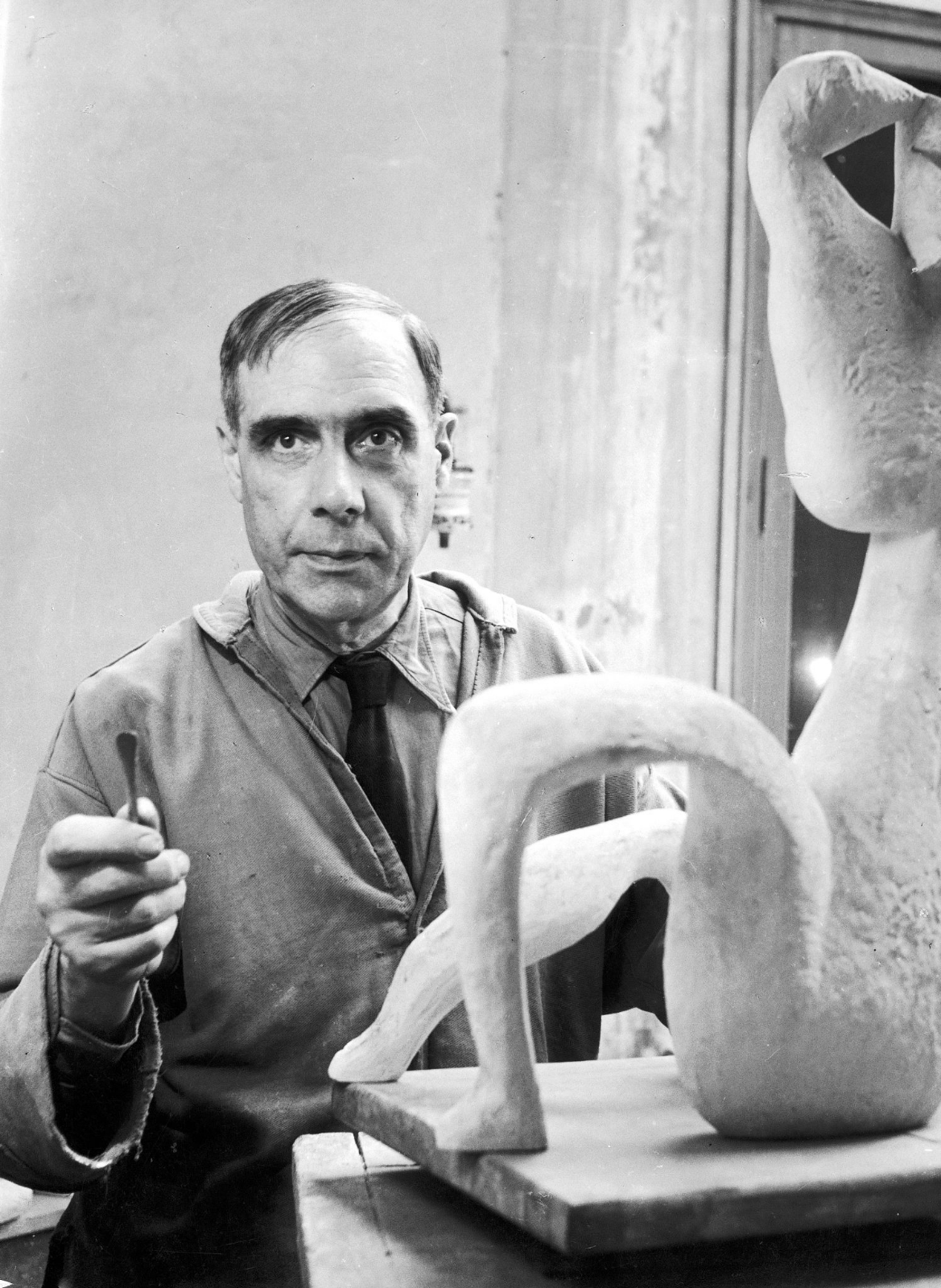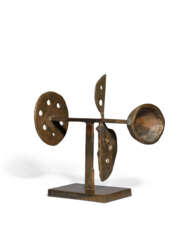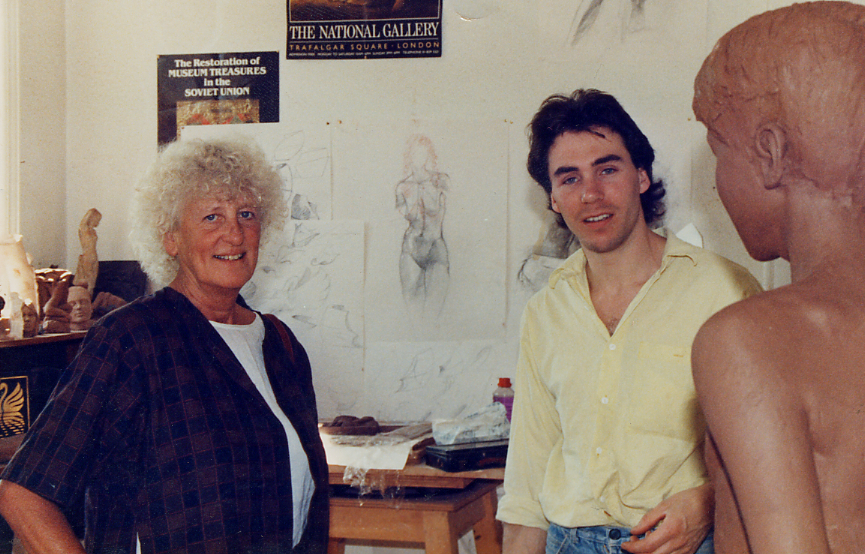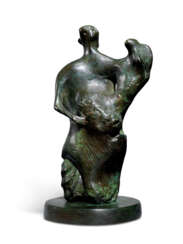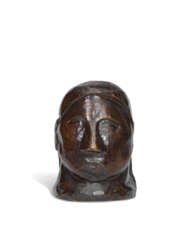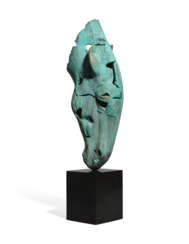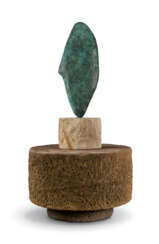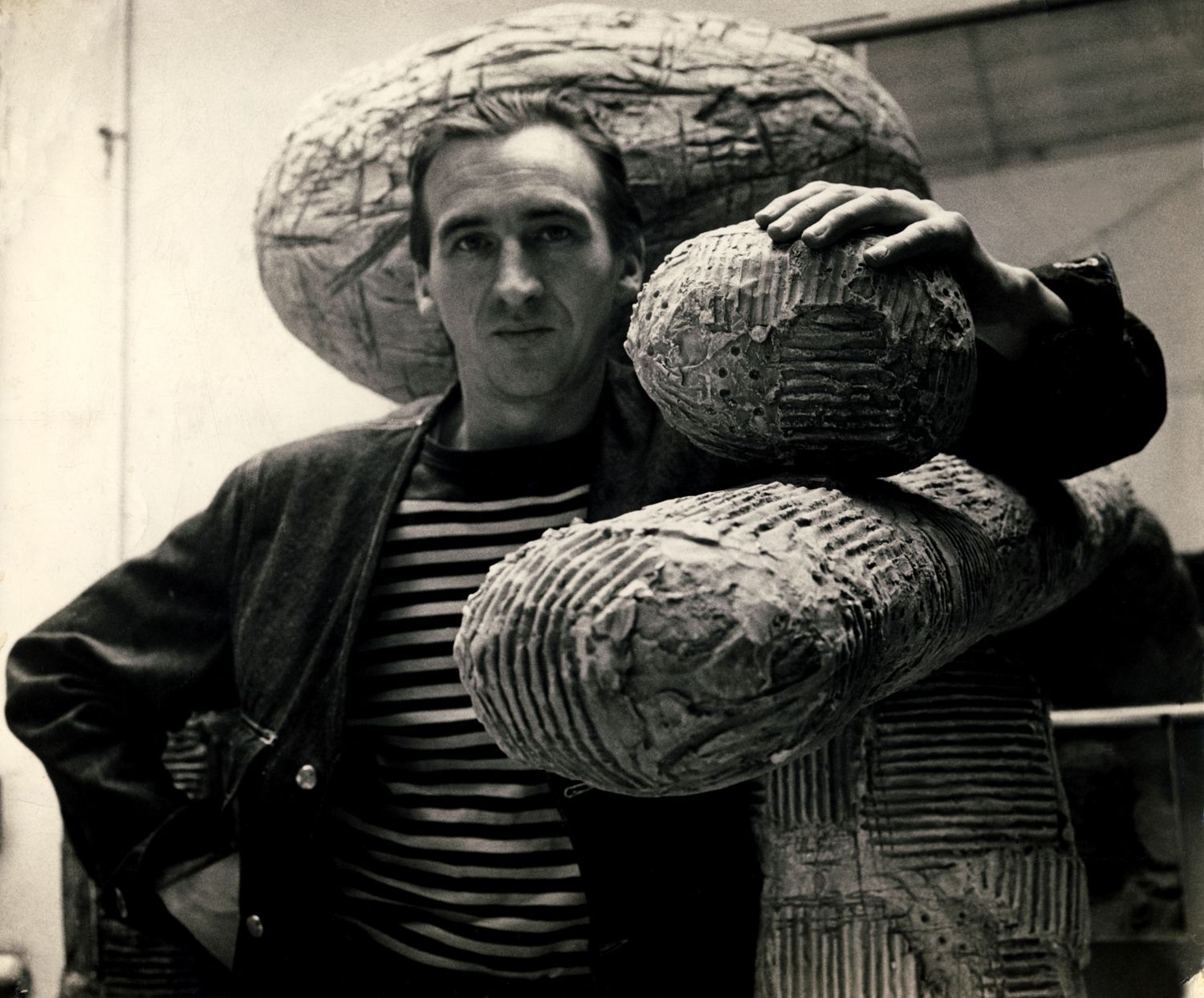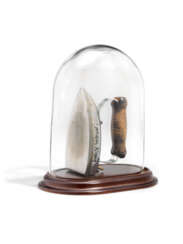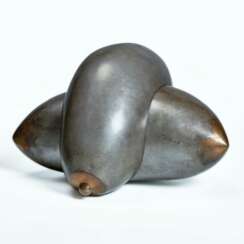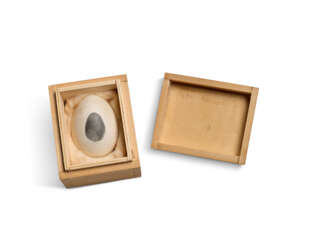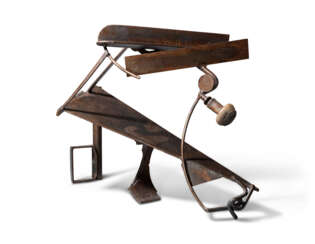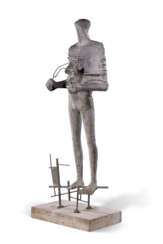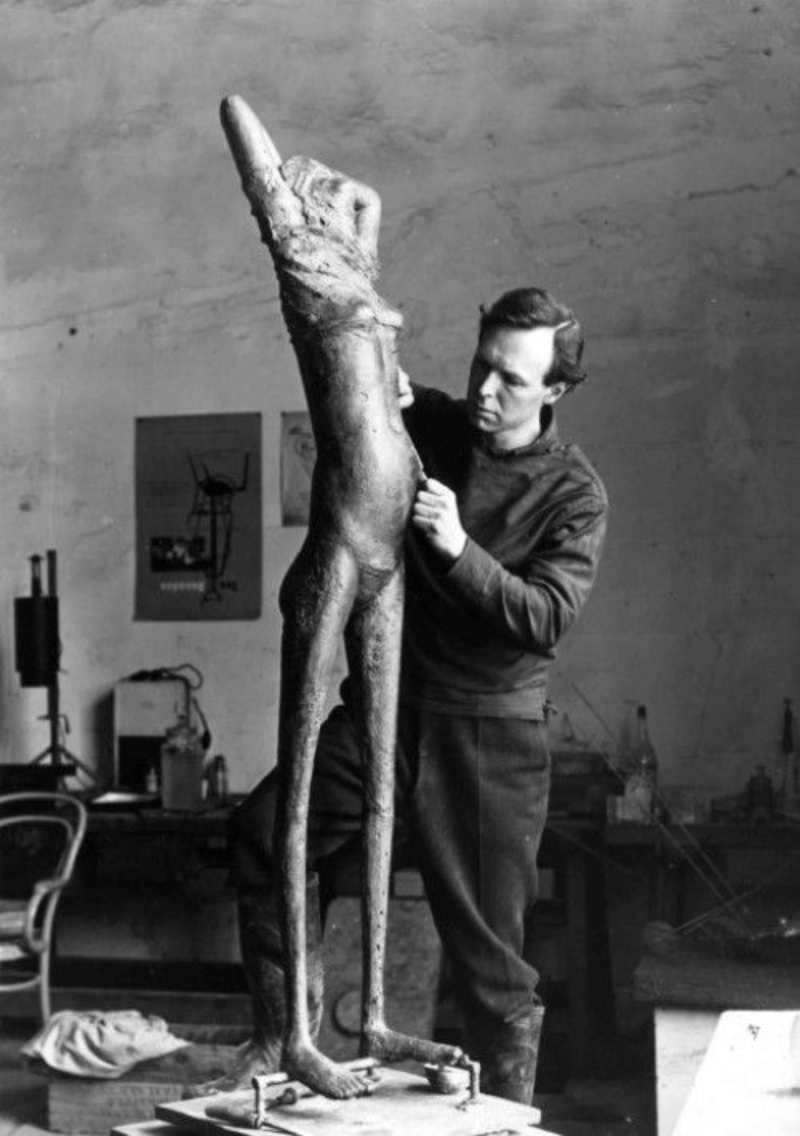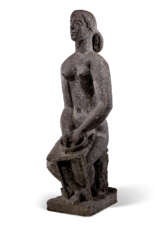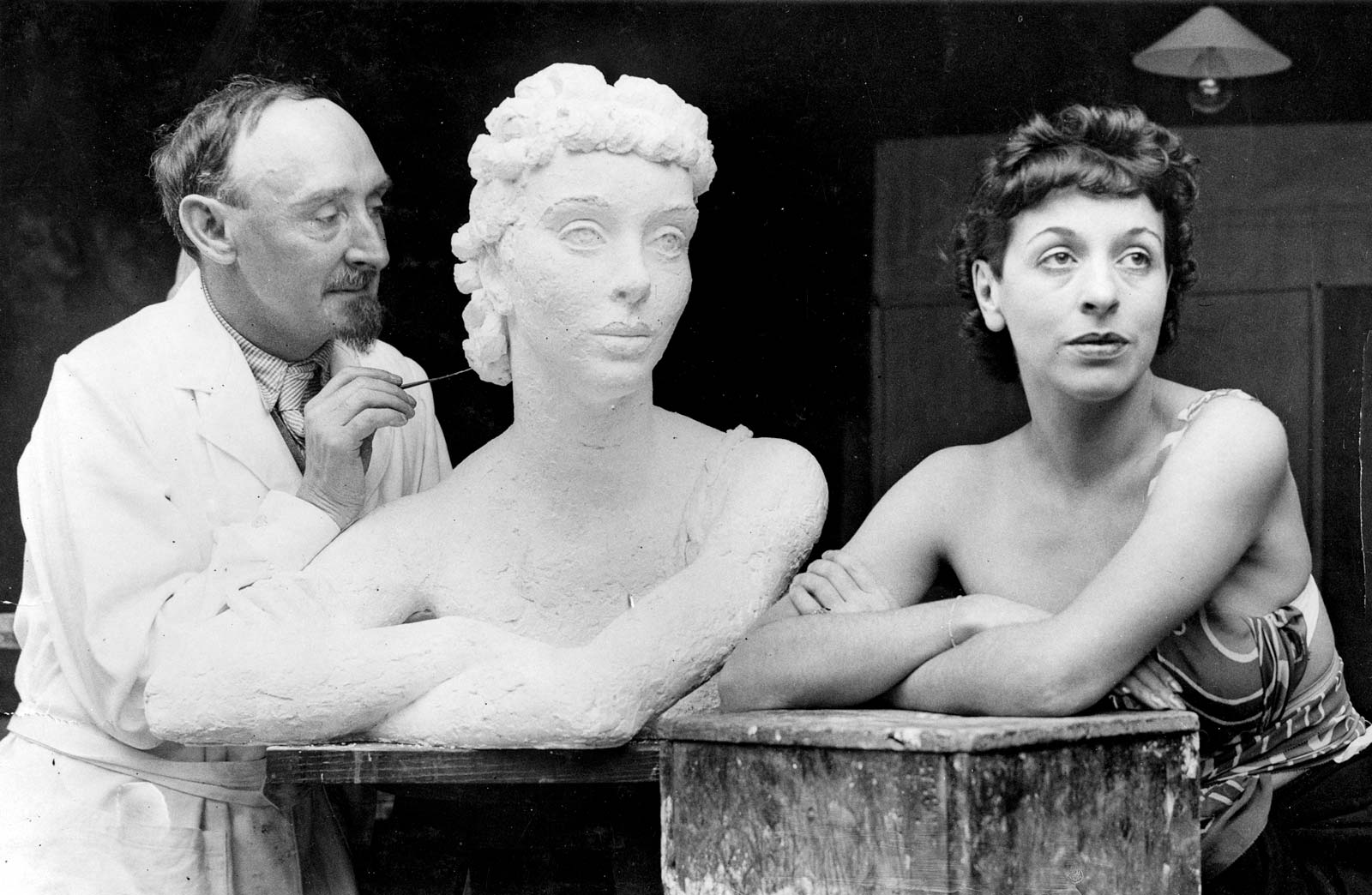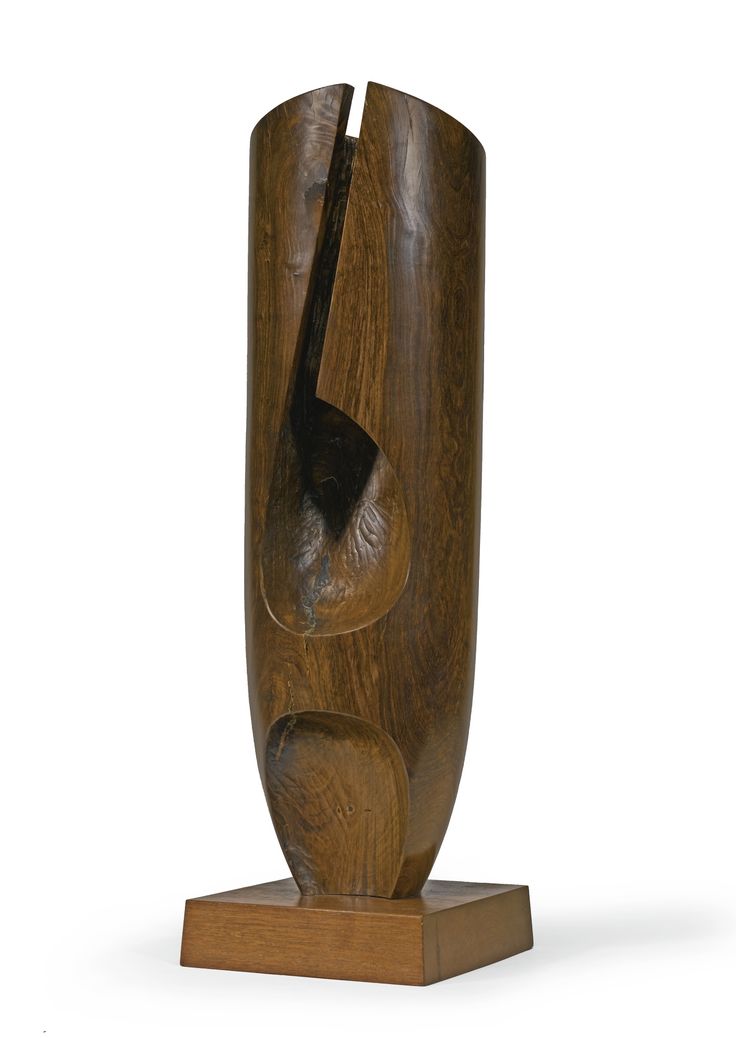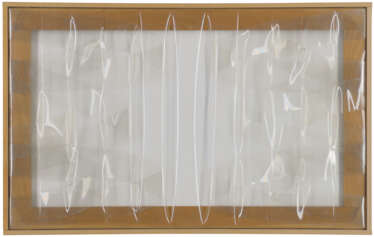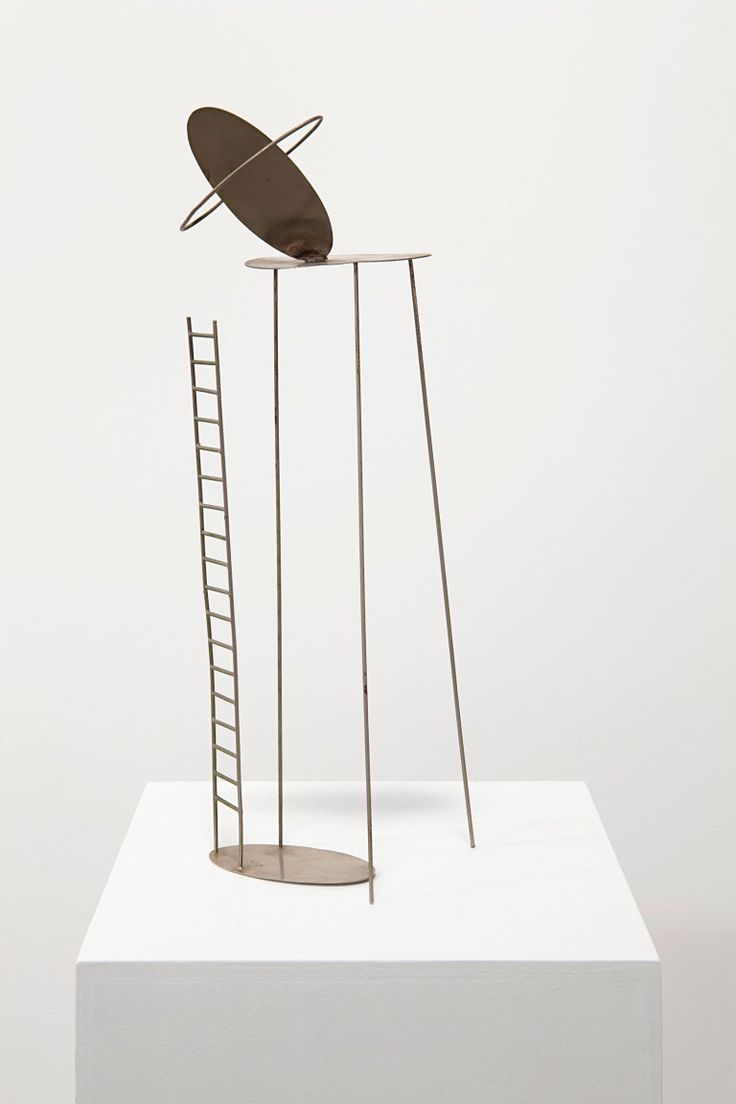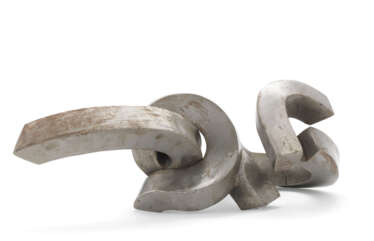
Statuettes — Dialogues: Modern and Contemporary Art

Louise Joséphine Bourgeois was a French-American artist. Although she is best known for her large-scale sculpture and installation art, Bourgeois was also a prolific painter and printmaker. She explored a variety of themes over the course of her long career including domesticity and the family, sexuality and the body, as well as death and the unconscious. These themes connect to events from her childhood which she considered to be a therapeutic process. Although Bourgeois exhibited with the Abstract Expressionists and her work has much in common with Surrealism and Feminist art, she was not formally affiliated with a particular artistic movement.
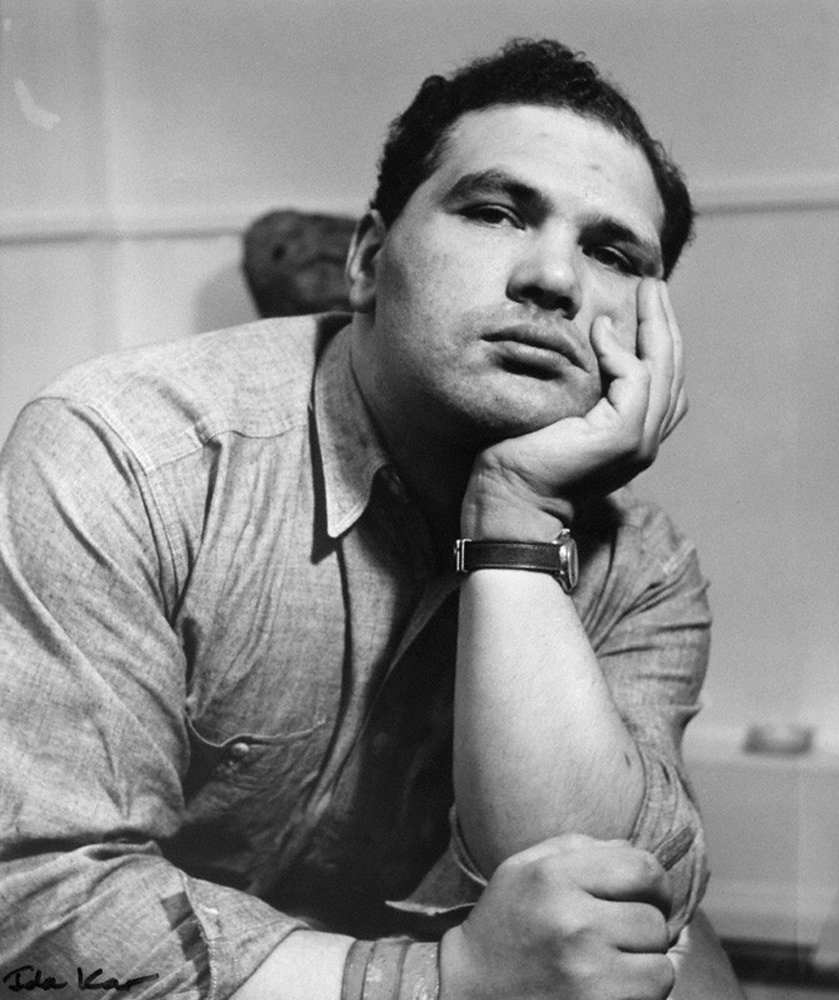
Eduardo Paolozzi was a Scottish artist renowned for his pioneering contributions to the Pop Art movement. His work, characterized by an amalgamation of popular culture references and technological imagery, played a significant role in shaping the visual arts landscape of the 20th century. Eduardo Paolozzi's graphic works, particularly from the 1960s, broke new ground in the silkscreen medium, with notable series such as "As Is When" and "Moonstrips Empire News" showcasing his innovative approach to art that combines elements of science, technology, and pop culture.
After a transformative period in Paris, where he interacted with key figures of the Surrealist movement, Eduardo Paolozzi returned to the UK, where he became a central figure in the formation of the Independent Group. This collective was instrumental in the development of British Pop Art, with Paolozzi's early collages, especially "I Was a Rich Man's Plaything," marking a seminal moment in the genre's emergence.
His artistic ventures were not confined to printmaking and collage; Eduardo Paolozzi's sculptures and mosaic murals, such as those for Tottenham Court Road tube station in London, also garnered acclaim for their intricate detail and thematic complexity. The artist's influence extended into his academic roles, where he nurtured future generations of artists.
Eduardo Paolozzi's legacy is preserved through extensive collections and exhibitions, such as at the National Galleries of Scotland, which holds a significant number of his works. This includes a recreation of his studio, providing insight into his creative process and the diverse influences that shaped his art.
For enthusiasts and collectors keen on delving deeper into Eduardo Paolozzi's world, signing up for updates can offer exclusive access to sales and auction events related to his works. This ensures that aficionados stay informed about opportunities to engage with the art and legacy of this influential figure.

Henry Spencer Moore was an influential English sculptor and artist, renowned for his semi-abstract monumental bronze sculptures that have found homes around the world as public works of art. Born on July 30, 1898, in Castleford, Yorkshire, Moore showed early talent in art, but his journey towards becoming a sculptor was not straightforward. His experiences as a young teacher and a soldier in the First World War, where he was injured in a gas attack, significantly shaped his perspectives and artistic direction.
After the war, Moore pursued his passion for art, winning a scholarship to the Royal College of Art in London, where he began to experiment with modernist influences and direct carving techniques, moving away from the traditional Victorian style. His works, characterized by organic shapes and a blend of abstraction and figuration, were inspired by a wide range of sources, including primitive art, the human body, and the natural world.
Moore's sculptures are celebrated for their unique ability to blend form with space in the landscape, offering viewers a dynamic interaction with his works. His dedication to public art made his sculptures accessible to a wide audience, contributing to his status as one of the 20th century's most significant sculptors. Moore's legacy is preserved through the Henry Moore Foundation, which supports artists and promotes public appreciation of sculpture.
For collectors and experts in art and antiques, Moore's work remains a testament to the power of sculpture to evoke emotion and thought. His contributions to modern art and sculpture continue to inspire and influence artists around the world.
To stay informed about new exhibitions and opportunities to view Henry Spencer Moore's work, sign up for updates. This subscription will ensure you are alerted to new product sales and auction events related to Moore's influential body of work.

Pablo Ruiz Picasso, a Spanish artist renowned for his revolutionary contributions to the 20th-century art scene, is a figure that resonates profoundly with collectors and art experts. His unique blend of talents in painting, sculpture, printmaking, and ceramic art, infused with his time in France, positioned him as a pivotal character in modern art history.
Picasso's artistic journey was marked by distinct periods, each showcasing his evolving style and genius. His early years were characterized by the Blue Period (1901-1904), followed by the Rose Period (1904-1906), and then the African-influenced Period (1907-1909). Picasso's name is synonymous with Cubism, a movement he co-founded, which significantly altered artistic perspectives and methods. Works like "Les Demoiselles d'Avignon" (1907) and "Guernica" (1937) are emblematic of his cubist legacy, the latter being a poignant anti-war statement that remains influential.
His later years saw a return to more traditional styles, with neoclassical and surrealist influences becoming evident. Works from these phases reflect a deep engagement with mythological themes, as seen in "Faun with Stars" (1955), symbolizing his late-life romance with Jacqueline Roque, his second wife.
Picasso's prolific output and innovative spirit made him a legend in his own time, a status that only grew after his death. His works, housed in major museums and private collections worldwide, continue to captivate and inspire.
As a collector or expert in art and antiques, staying informed about Picasso's works, their auction events, and sales is essential. To stay updated on the latest developments and opportunities related to Pablo Picasso, sign up for our specialized updates. Rest assured, this subscription will focus solely on new product sales and auction events pertaining to Picasso's art, ensuring that you receive only the most relevant and valuable information.

Eduardo Paolozzi was a Scottish artist renowned for his pioneering contributions to the Pop Art movement. His work, characterized by an amalgamation of popular culture references and technological imagery, played a significant role in shaping the visual arts landscape of the 20th century. Eduardo Paolozzi's graphic works, particularly from the 1960s, broke new ground in the silkscreen medium, with notable series such as "As Is When" and "Moonstrips Empire News" showcasing his innovative approach to art that combines elements of science, technology, and pop culture.
After a transformative period in Paris, where he interacted with key figures of the Surrealist movement, Eduardo Paolozzi returned to the UK, where he became a central figure in the formation of the Independent Group. This collective was instrumental in the development of British Pop Art, with Paolozzi's early collages, especially "I Was a Rich Man's Plaything," marking a seminal moment in the genre's emergence.
His artistic ventures were not confined to printmaking and collage; Eduardo Paolozzi's sculptures and mosaic murals, such as those for Tottenham Court Road tube station in London, also garnered acclaim for their intricate detail and thematic complexity. The artist's influence extended into his academic roles, where he nurtured future generations of artists.
Eduardo Paolozzi's legacy is preserved through extensive collections and exhibitions, such as at the National Galleries of Scotland, which holds a significant number of his works. This includes a recreation of his studio, providing insight into his creative process and the diverse influences that shaped his art.
For enthusiasts and collectors keen on delving deeper into Eduardo Paolozzi's world, signing up for updates can offer exclusive access to sales and auction events related to his works. This ensures that aficionados stay informed about opportunities to engage with the art and legacy of this influential figure.

Man Ray, born Emmanuel Radnitzky, was an American visual artist who played a significant role in the Dada and Surrealist movements. His pioneering efforts in photography, alongside his work in painting and sculpture, have cemented his place as a major figure in modern art. Known for his innovative techniques and the ability to convey complex ideas through simple, striking visuals, Man Ray's contribution to the art world is profound.
Throughout his career, Man Ray was celebrated for his avant-garde approach and his ability to transcend traditional boundaries between different artistic mediums. His photography, characterized by experimental techniques such as solarization and rayographs (cameraless photographs), challenged conventional perceptions of photography as merely a means of representation. These artistic innovations made him a central figure in both Parisian and American art circles.
Man Ray's works are housed in some of the world's most prestigious museums and galleries, including the Museum of Modern Art in New York and the Centre Pompidou in Paris. His pieces, such as "Le Violon d'Ingres" and "Noire et Blanche," are iconic images that continue to influence artists today. His ability to blend the abstract with the realistic, and the humorous with the serious, has left a lasting legacy in the world of art.
For collectors and experts in art and antiques, the work of Man Ray offers a glimpse into the revolutionary changes that shaped the visual arts in the 20th century. His unique perspective and pioneering techniques continue to inspire and challenge those interested in the boundaries of creativity and expression.
If you're passionate about the avant-garde, or simply wish to explore the fascinating world of Man Ray further, sign up for our updates. You'll receive alerts on new product sales and auction events related to Man Ray, ensuring you never miss an opportunity to engage with the legacy of this extraordinary artist.

Louise Joséphine Bourgeois was a French-American artist. Although she is best known for her large-scale sculpture and installation art, Bourgeois was also a prolific painter and printmaker. She explored a variety of themes over the course of her long career including domesticity and the family, sexuality and the body, as well as death and the unconscious. These themes connect to events from her childhood which she considered to be a therapeutic process. Although Bourgeois exhibited with the Abstract Expressionists and her work has much in common with Surrealism and Feminist art, she was not formally affiliated with a particular artistic movement.
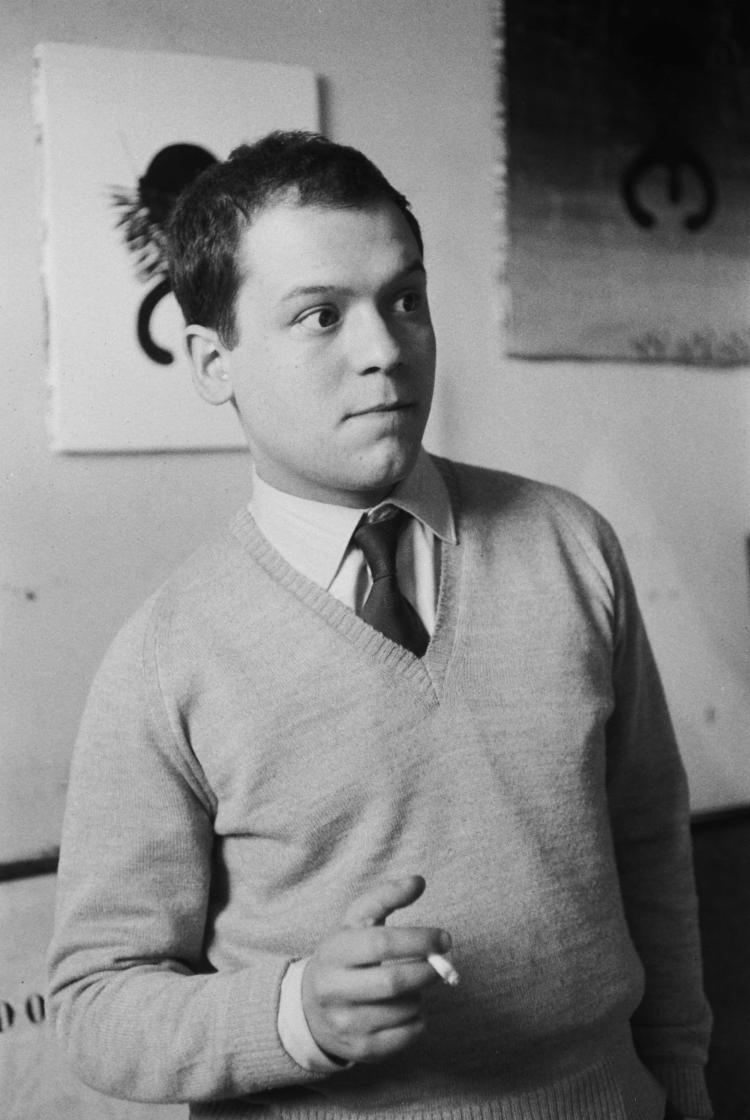
Piero Manzoni was an Italian artist. He was a leading figure in the Italian avant-garde movement of the 1950s and 1960s, and is best known for his conceptual and performance artworks.
Manzoni's works often involved the use of unconventional materials, such as his famous series of "Artist's Shit" cans, which were filled with his own excrement and sealed with a label that declared "Artist's Shit". He also created works using cotton balls, balloons, and even human hair.
One of Manzoni's most famous performances was "Living Sculptures," in which he covered himself in gold paint and posed as a living statue in a gallery. He also created a "Base of the World," a pedestal labeled with that phrase, and invited people to stand on it, thereby declaring themselves the center of the world.
Manzoni's works challenged traditional notions of art and pushed the boundaries of what was considered acceptable as artistic expression.
Sir Anthony Alfred Caro was an English abstract sculptor who played a key role in the development of twentieth-century sculpture.
Caro trained at the Royal Academy School in London. In the early 1960s, he began making brightly colored abstract steel structures that he placed directly on the floor - the lack of a pedestal meant a radical shift in the dynamic between the work and the viewer. In addition to steel, he also created works in bronze, lead, silver, ceramics and wood, as well as on paper.

Eduardo Paolozzi was a Scottish artist renowned for his pioneering contributions to the Pop Art movement. His work, characterized by an amalgamation of popular culture references and technological imagery, played a significant role in shaping the visual arts landscape of the 20th century. Eduardo Paolozzi's graphic works, particularly from the 1960s, broke new ground in the silkscreen medium, with notable series such as "As Is When" and "Moonstrips Empire News" showcasing his innovative approach to art that combines elements of science, technology, and pop culture.
After a transformative period in Paris, where he interacted with key figures of the Surrealist movement, Eduardo Paolozzi returned to the UK, where he became a central figure in the formation of the Independent Group. This collective was instrumental in the development of British Pop Art, with Paolozzi's early collages, especially "I Was a Rich Man's Plaything," marking a seminal moment in the genre's emergence.
His artistic ventures were not confined to printmaking and collage; Eduardo Paolozzi's sculptures and mosaic murals, such as those for Tottenham Court Road tube station in London, also garnered acclaim for their intricate detail and thematic complexity. The artist's influence extended into his academic roles, where he nurtured future generations of artists.
Eduardo Paolozzi's legacy is preserved through extensive collections and exhibitions, such as at the National Galleries of Scotland, which holds a significant number of his works. This includes a recreation of his studio, providing insight into his creative process and the diverse influences that shaped his art.
For enthusiasts and collectors keen on delving deeper into Eduardo Paolozzi's world, signing up for updates can offer exclusive access to sales and auction events related to his works. This ensures that aficionados stay informed about opportunities to engage with the art and legacy of this influential figure.
Sir Anthony Alfred Caro was an English abstract sculptor who played a key role in the development of twentieth-century sculpture.
Caro trained at the Royal Academy School in London. In the early 1960s, he began making brightly colored abstract steel structures that he placed directly on the floor - the lack of a pedestal meant a radical shift in the dynamic between the work and the viewer. In addition to steel, he also created works in bronze, lead, silver, ceramics and wood, as well as on paper.
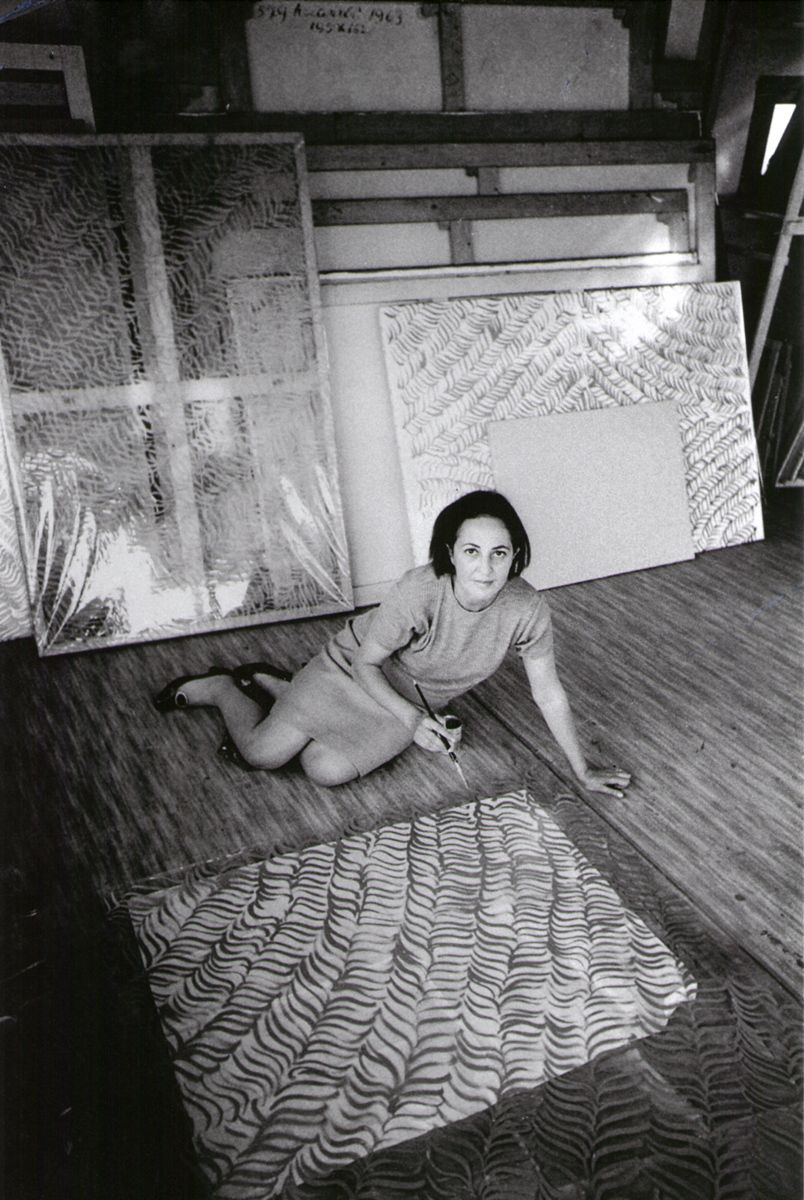
Carla Accardi was an Italian abstractionist painter associated with the Arte Informel and Arte Povera movements and a founding member of the art groups Forma (1947) and Continuità (1961). She studied painting at the Academy of Fine Arts in Palermo and Florence.
Carla Accardi was known for her innovative use of materials and her exploration of geometric shapes and vivid colours. One of her notable contributions was the introduction of the "tela intrecciata" (interwoven canvas) technique, in which she used strips of coloured canvas to create textured and layered compositions.
Accardi's work often exhibited a sense of rhythm and movement, a dynamic arrangement of forms and lines. Her compositions are characterised by a sense of balance and harmony and often incorporate elements of repetition and symmetry.


